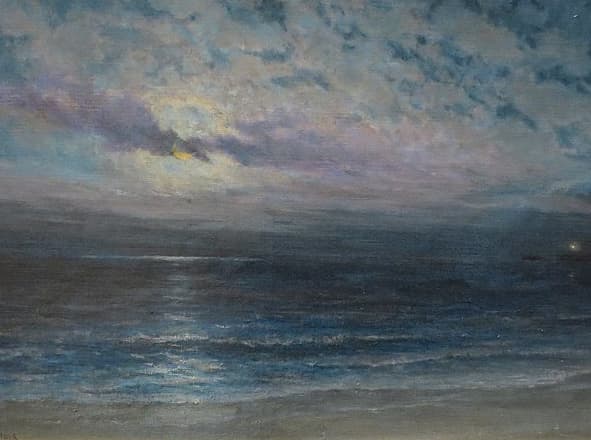Poem of the Day: ‘Stanzas for Music’
Byron’s 1816 poem conveys melody in part by stretching its metaphor: the moon as worshiping the sea as a lover worships his belovèd.

Lord Byron (1788–1824) gave five different poems the title “Stanzas for Music” — simply as a generic name by which he meant either that he heard the rhythm of a melody while he wrote the poems, or that he hoped eventually some composer would set them to music. As it happens, four out of the five are about grief at a loved one’s death, which may say something interesting about Byron’s sense of the emotions of music. Only today’s “Stanzas for Music” — the 1816 poem that begins “There be none of Beauty’s daughters” — is a present-tense love poem: a claim of awe at the presence of the object of love. The poem, two rhymed stanzas of alternating tetrameter and trimeter lines, gets much of its melodic power from its mostly trochaic feet, those falling sounds that Byron was always so good at. But another part of its sense of melody comes from the way the poem builds, stretching its metaphor: the moon as worshiping the sea as a lover worships his belovèd.
Stanzas for Music
by Lord Byron
There be none of Beauty’s daughters
With a magic like thee;
And like music on the waters
Is thy sweet voice to me:
When, as if its sound were causing
The charmed ocean’s pausing,
The waves lie still and gleaming,
And the lull’d winds seem dreaming:
And the midnight moon is weaving
Her bright chain o’er the deep;
Whose breast is gently heaving,
As an infant’s asleep:
So the spirit bows before thee,
To listen and adore thee;
With a full but soft emotion,
Like the swell of Summer’s ocean.
___________________________________________
With “Poem of the Day,” The New York Sun offers a daily portion of verse selected by Joseph Bottum with the help of the North Carolina poet Sally Thomas, the Sun’s associate poetry editor. Tied to the day, or the season, or just individual taste, the poems will be typically drawn from the lesser-known portion of the history of English verse. In the coming months we will be reaching out to contemporary poets for examples of current, primarily formalist work, to show that poetry can still serve as a delight to the ear, an instruction to the mind, and a tonic for the soul.
